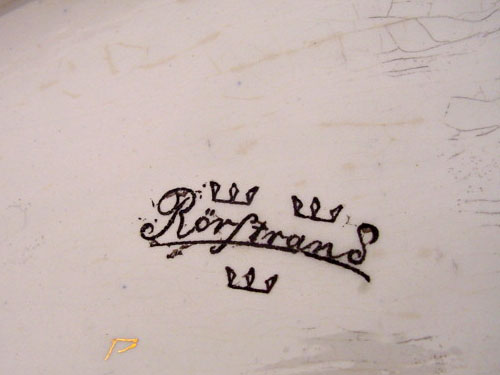


The factory was founded in 1726 at Rörstrand Castle in Stockholm by Johann Wolf, who came from Germany. Initially, faience was produced at the factory. In the 1740s, vessels from Rörstrand began to be decorated with the characteristic rich patterns that would later become the hallmark of Swedish wares. Around the 1860s, wares began to be marked to distinguish them from vessels produced by competitors. The beginning of the 19th century brought modernisation to the manufactory - production was upgraded and new series were introduced, including the English-inspired faience "Svart Sverige" ("Black Sweden"). In the second half of the 19th century, Rörstrand began producing porcelain. The factory thrived and even opened a second plant in Finland to make it more advantageous for the Swedish giant to export crockery to Russia. In the mid-1920s, production was moved from Stockholm to Gothenburg and then to Lidköping. The iconic Rörstrand service was the 'National Service' designed by Louise Adelborg and presented at the 1930 Stockholm Fair. Another great success was the Ostindia service, named after a Swedish ship that sank while returning from China. The Ostindia service was declared the Swedish service of the century. Artists such as Gunnar Nylund, Carl-Harry Stålhane, Hertha Bengtson, Inger Persson and Marianne Westman worked with the label. The factory in Lidköping was closed down in 2005.